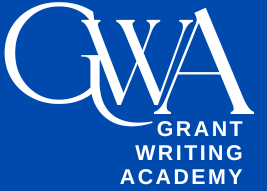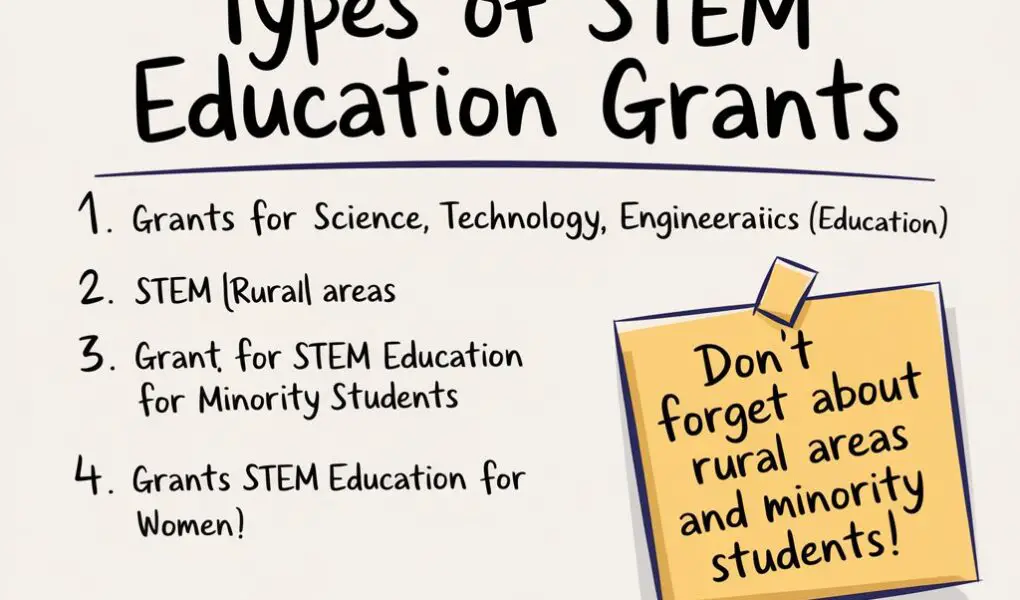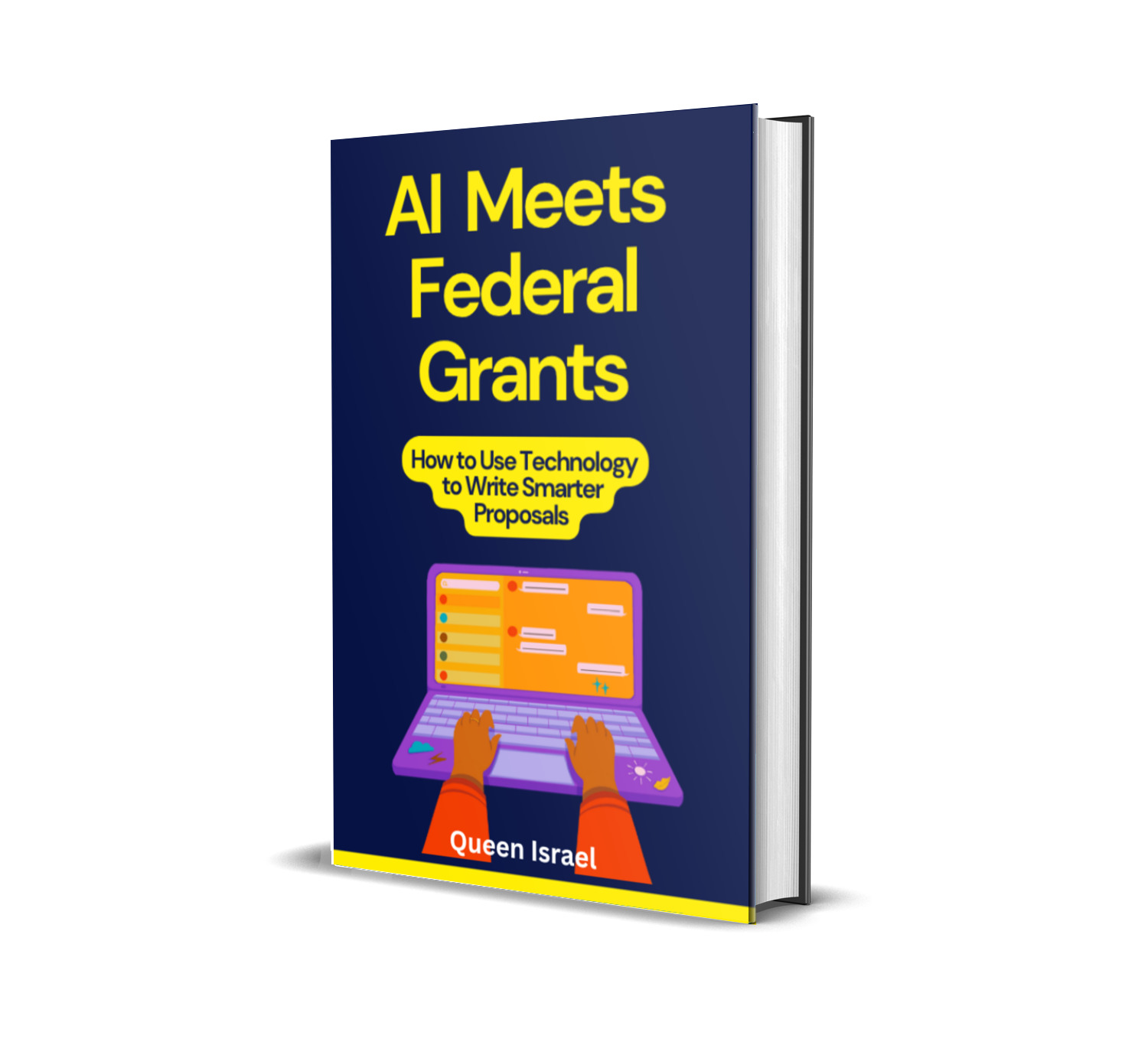STEM education grants are essential because they provide critical resources that support hands-on learning, encourage research and innovation, and foster community involvement.
With the increasing demand for a workforce skilled in technology, engineering, mathematics, and science, these grants help bridge the gap between limited school budgets and the rising cost of quality STEM programs.
For instance, the U.S. Bureau of Labor Statistics projects that STEM occupations will grow significantly faster than non-STEM jobs over the next decade.
Grants not only offer financial support but also create a pathway for teacher training, modern curriculum development, and cutting-edge research initiatives that directly benefit students and communities alike.
A notable example is the recent $6.5 million grant awarded by the Toyota USA Foundation to East Central ISD, designed to boost workforce development and enhance STEM learning from elementary through high school.
Types of STEM Education Grants
STEM education grants come in many shapes and sizes, each catering to different needs and types of institutions. Here are the primary categories:
1. Government Grants
Federal agencies such as the National Science Foundation (NSF), the U.S. Department of Education, and Grants.gov offer numerous STEM grants. These grants often target:
- Curriculum development
- Teacher professional development
- Student research initiatives
- Community outreach programs
For example, the NSF’s Directorate for STEM Education provides competitive grants that support everything from innovative lab equipment to comprehensive teacher training programs.
2. Private and Corporate Grants
Many corporations and private foundations understand the value of investing in STEM education. Organizations like the Lemelson Foundation, the Bill & Melinda Gates Foundation, and the Silicon Valley Education Foundation provide grants that:
-
data-start="2788" data-end="2900">
- Encourage innovation
- Support underrepresented groups
- Fund pilot programs and research projects
These grants frequently aim to create lasting impact by fostering a culture of innovation and entrepreneurship in schools and communities.
3. Local and Regional Grants
Local governments, community foundations, and regional partnerships offer STEM grants designed to address specific community needs. These grants are often more flexible and can be tailored to the unique challenges of a particular area, whether that’s improving access to technology in rural schools or supporting after-school STEM programs in urban districts.
4. Specialized Grants for Underrepresented Groups
A growing trend is the creation of grants aimed at increasing diversity and inclusion in STEM fields. Research shows that girls, minorities, and students from low socioeconomic backgrounds often face barriers to entering STEM careers. Programs like those highlighted in the ROX study have underscored the importance of building confidence and providing role models for young girls in STEM.
How to Find STEM Education Grants
Finding the right grant is like searching for a needle in a haystack, but with the right tools and strategies, you can significantly narrow down your options. Here are some practical steps:
- Use Grant Databases: Websites like Grants.gov, the NSF Funding Opportunities page, and regional education portals provide searchable databases where you can filter grants by category, eligibility, and deadline.
- Leverage Keywords: When searching, use keywords such as innovation, funding, STEM, education, research, proposal, eligibility, and deadline. Highlight these words in your searches to quickly identify the grants that best match your needs.
- Check with Local Agencies: Local educational agencies, community foundations, and state departments of education often have dedicated pages for available STEM grants. For example, Connecticut’s state grants for after-school programs have supported numerous districts with tailored STEM initiatives.
-
- Network: Join professional organizations and subscribe to newsletters (like the one from Grant Writing Academy) to stay updated on the latest opportunities. Networking with other educators and grant writers can lead to valuable insights and shared resources.
Strategies for Writing a Winning Grant Proposal
A stellar grant proposal is your ticket to securing the funding necessary to implement transformative STEM programs. Here’s how you can craft a proposal that stands out:
1. Start with a Clear Mission Statement
Your proposal should begin with a compelling narrative that outlines your project’s goals and how they align with the objectives of the funding agency. Explain how your project will impact students, teachers, and the broader community by improving STEM literacy and fostering innovation.
2. Use Data and Evidence
Support your proposal with robust data. For instance, you might include statistics showing the projected growth of STEM jobs or evidence from studies indicating the benefits of hands-on STEM learning. Citing data from reputable sources such as the NCSES or the U.S. Department of Education can significantly strengthen your case.
3. Provide a Detailed Budget
A clear and realistic budget is critical. Break down all expenses, including materials, technology, personnel, and training costs. Explain how every dollar will contribute to achieving your goals.
4. Tell a Story
Engage your reviewers by telling the story of your project. Describe a day in the life of a student who benefits from your program, or share a success story from a previous grant project. Storytelling not only humanizes your proposal but also makes it memorable.
5. Follow Guidelines
Ensure you adhere strictly to the funding agency’s guidelines. Pay attention to formatting, word limits, and required documentation. Missing a small detail can result in disqualification.
6. Proofread and Get Feedback
Before submission, have colleagues review your proposal. Fresh eyes can catch errors and offer valuable suggestions to enhance clarity and impact.
For more detailed tips, templates, and resources on grant writing, subscribe to the Grant Writing Academy Newsletter. Our newsletter is packed with strategies, expert advice, and proven templates that will help you boost your success rate in securing STEM education grants.
Case Studies and Success Stories
a) Toyota USA Foundation’s $6.5 Million Grant
One inspiring example of successful grant funding is the Toyota USA Foundation’s $6.5 million grant to East Central ISD. This grant was designed to enhance workforce development and ensure students from underserved communities gain access to high-quality STEM education. By providing critical resources and innovative programming, the grant not only increased student engagement in STEM subjects but also laid the foundation for a robust local innovation ecosystem
b) Lemelson Foundation and the Silicon Valley Education Foundation
Private foundations have also made significant contributions. The Lemelson Foundation, for example, has supported numerous projects aimed at increasing diversity and innovation in STEM fields. Their funding supports everything from invention competitions to teacher training programs. Similarly, the Silicon Valley Education Foundation has awarded grants that empower local educators and provide state-of-the-art technology and curriculum resources, ensuring that schools in Silicon Valley remain at the forefront of innovative teaching practices.
c) Local Initiatives: After-School Programs in Connecticut
In north-central Connecticut, three school districts—East Hartford, Enfield, and Manchester—have received federal grants totaling nearly $20 million to establish after-school learning centers. These programs focus on providing academic support and extracurricular activities, including STEM projects, to boost student achievement and community engagement
d) International Impact: Winston Churchill Fellowships
Beyond the United States, international initiatives also highlight the transformative power of STEM education grants. For instance, three Toowoomba scholars in Australia received prestigious scholarship grants through the Winston Churchill Memorial Trust. These fellowships enable scholars to study and implement best practices in STEM education internationally, thereby broadening their perspectives and enhancing their future contributions to the STEM workforce.
Impact of STEM Education Grants on Communities
STEM education grants have a profound impact on communities by:
- Enhancing Student Engagement: Grants provide the funds needed for modern labs, interactive learning tools, and hands-on projects that make STEM subjects more engaging for students.
- Promoting Diversity and Inclusion: Special grants aimed at underrepresented groups help close the gender and diversity gap in STEM, ensuring that all students have equal opportunities to succeed.
- Supporting Teacher Development: Professional development grants empower teachers with the latest training and resources, improving their instructional methods and boosting student outcomes.
- Fostering Local Innovation: By investing in STEM education, communities cultivate a local talent pool that can drive future innovation, attract high-tech industries, and create new job opportunities.
- Economic Growth: As students become proficient in STEM fields, they are better prepared for high-paying jobs in growing sectors, contributing to overall economic development.
For example, research shows that in many regions where robust STEM programs are in place, there is a notable increase in student performance and a higher rate of post-secondary enrollment in STEM-related fields. These outcomes not only benefit the students but also contribute to a more dynamic and competitive local economy.
Common Challenges and How to Overcome Them
While the opportunities are abundant, many applicants encounter obstacles when applying for STEM education grants. Here are some common challenges along with strategies to overcome them:
1. Navigating Complex Application Processes
Many grant applications come with detailed guidelines and strict deadlines. To tackle this:
- Break Down the Process: Create a timeline with key deadlines and milestones.
- Use Checklists: Develop a checklist to ensure every required document and detail is included.
- Seek Expert Advice: Don’t hesitate to consult experienced grant writers or subscribe to resources like the Grant Writing Academy Newsletter for tailored support.
2. Limited Budget and Resource Constraints
Schools and districts often operate on tight budgets, making it challenging to allocate sufficient resources to the grant application process.
- Collaborate: Partner with local businesses, community organizations, and other schools to share resources and expertise.
- Be Creative: Highlight how even modest funds can create substantial impact with innovative solutions and cost-effective strategies.
3. Demonstrating Measurable Outcomes
Funding agencies require clear evidence that their investment will yield measurable results.
- Set Clear Objectives: Outline specific, quantifiable goals and the methods you will use to measure success.
- Use Data: Leverage statistics and research findings to support your proposed outcomes.
- Plan for Evaluation: Include a detailed evaluation plan in your proposal to track progress and adjust strategies as needed.
4. Building a Strong Narrative
A compelling narrative is crucial for making your proposal stand out.
- Tell a Story: Use real-life examples and testimonials to illustrate the impact of your program.
- Emphasize Impact: Focus on the broader benefits—such as improved student achievement, community growth, and future workforce readiness.
- Highlight Innovation: Show how your project introduces innovative approaches and technology that set it apart from traditional programs.
Future Trends in STEM Education Grants
The landscape of STEM education funding is continuously evolving. Here are some emerging trends to keep an eye on:
a) Increasing Focus on Diversity and Inclusion
Recent studies indicate that while interest in STEM fields is rising among girls and underrepresented minorities, confidence in their abilities is still lacking
. Future grant programs are expected to place even greater emphasis on initiatives that build confidence and provide mentoring and role models for these groups.
b) Emphasis on Technology and Innovation
With rapid advancements in technology, there is a growing need for programs that integrate new tools into the classroom. Grants that fund interactive labs, virtual reality experiences, and coding programs are becoming more common, ensuring that students receive an education that mirrors current industry standards.
c) Collaborative and Interdisciplinary Approaches
There is an increasing trend toward partnerships that span multiple disciplines. Grants are now encouraging collaborations between schools, universities, and industries to develop interdisciplinary projects that not only teach STEM subjects but also integrate elements of innovation, entrepreneurship, and design thinking.
d) Data-Driven Decision Making
Funders are increasingly looking for proposals that are supported by data. The integration of detailed budgets, measurable outcomes, and comprehensive evaluation plans will be critical in future applications. Utilizing data from organizations like the National Center for Science and Engineering Statistics (NCSES) and UNESCO can bolster your proposal’s credibility.
e) Expansion of Grant Opportunities
As awareness of the importance of STEM education grows, more grant opportunities—both public and private—are becoming available. From large-scale federal grants to small, community-driven projects, there is no shortage of opportunities to secure funding. Keeping abreast of these opportunities through regular updates from grant databases and newsletters is essential.
The Role of the Grant Writing Academy Newsletter
Navigating the complex world of grant writing can be challenging, but you don’t have to do it alone. By subscribing to the Grant Writing Academy Newsletter, you gain access to:
- Expert Tips and Strategies: Learn how to craft compelling proposals, manage budgets, and avoid common pitfalls.
- Templates and Tools: Use ready-made templates and checklists to streamline your application process.
- Success Stories: Read case studies and interviews with successful grant writers who have secured significant funding for STEM programs.
- Timely Updates: Stay informed about new grant opportunities, upcoming deadlines, and changes in funding priorities.
This invaluable resource is designed to help you boost your success rate and secure the funding you need to make a real impact in STEM education.
Conclusion
STEM education grants are a critical driver for innovation, research, and educational excellence. They empower educators to implement forward-thinking programs that prepare students for the challenges of tomorrow, while simultaneously fueling local economies and fostering community engagement.
Whether you are seeking funding for advanced technology labs, comprehensive teacher training programs, or initiatives designed to enhance diversity and inclusion in STEM, the opportunities are vast.
By understanding the types of grants available, knowing where and how to search for these opportunities, and employing effective strategies for writing winning proposals, you can significantly increase your chances of success.
Remember, the key to a great proposal is a clear narrative, robust data support, and adherence to guidelines. And for those who need extra support, the Grant Writing Academy Newsletter is your go-to resource for expert advice, templates, and ongoing updates.
Take the first step towards transforming your STEM program today. Subscribe to the Grant Writing Academy Newsletter and join a community of dedicated professionals who are making a difference through STEM education grants.
With determination, creativity, and the right support, your next grant proposal could be the catalyst for an innovative, inclusive, and inspiring STEM education program that changes lives and shapes the future. Let’s harness the power of STEM to unlock opportunities, drive innovation, and build a better world—one grant at a time.
For more details and resources, be sure to visit Grants.gov and explore funding opportunities through organizations such as the National Science Foundation,
grants.gov, and check out our curated lists of grants available for K-12 and nonprofit STEM programs.






